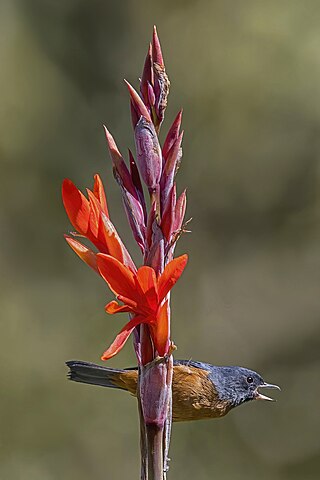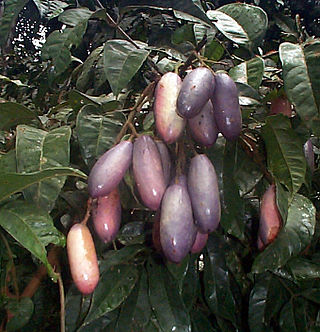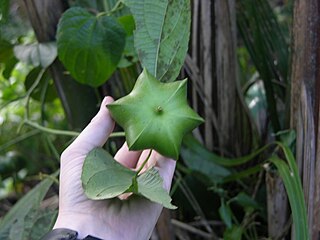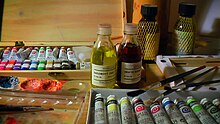
Flax, also known as common flax or linseed, is a flowering plant, Linum usitatissimum, in the family Linaceae. It is cultivated as a food and fiber crop in regions of the world with temperate climates. Textiles made from flax are known in English as linen and are traditionally used for bed sheets, underclothes, and table linen. Its oil is known as linseed oil. In addition to referring to the plant, the word "flax" may refer to the unspun fibers of the flax plant. The plant species is known only as a cultivated plant and appears to have been domesticated just once from the wild species Linum bienne, called pale flax. The plants called "flax" in New Zealand are, by contrast, members of the genus Phormium.

Saffron is a spice derived from the flower of Crocus sativus, commonly known as the "saffron crocus". The vivid crimson stigma and styles, called threads, are collected and dried for use mainly as a seasoning and colouring agent in food. Although some doubts remain on its origin, it is believed that saffron originated in Iran. However, Greece and Mesopotamia have also been suggested as the possible region of origin of this plant. Saffron crocus slowly propagated throughout much of Eurasia and was later brought to parts of North Africa, North America, and Oceania.

The lentil is an edible legume. It is an annual plant known for its lens-shaped seeds. It is about 40 cm (16 in) tall, and the seeds grow in pods, usually with two seeds in each. As a food crop, the largest producers are Canada and India, producing 29% and 27%, respectively, of the world's total lentils in 2021.

Vigna subterranea is a member of the family Fabaceae. Its name is derived from the Bambara tribe. The plant originated in West Africa. As a food and source of income, the Bambara groundnut is considered to be the third most important leguminous crop in those African countries where it is grown, after peanut and cowpea. The crop is mainly cultivated, sold and processed by women, and is, thus, particularly valuable for female subsistence farmers.

Salvia hispanica, one of several related species commonly known as chia, is a species of flowering plant in the mint family, Lamiaceae, native to central and southern Mexico and Guatemala. It is considered a pseudocereal, cultivated for its edible, hydrophilic chia seed, grown and commonly used as food in several countries of western South America, western Mexico, and the southwestern United States.
gamma-Linolenic acid or GLA is an n−6, or omega-6, fatty acid found primarily in seed oils. When acting on GLA, arachidonate 5-lipoxygenase produces no leukotrienes and the conversion by the enzyme of arachidonic acid to leukotrienes is inhibited.

Camelina sativa is a flowering plant in the family Brassicaceae usually known as camelina, gold-of-pleasure, or false flax, but also occasionally as wild flax, linseed dodder, German sesame, or Siberian oilseed. It is native to Europe and areas of Central Asia, but cultivated as an oilseed crop mainly in Europe and in North America. It is not related to true flax, in the family Linaceae.

Chenopodium pallidicaule, known as cañihua, canihua or cañahua and also kaniwa, is a species of goosefoot, similar in character and uses to the closely related quinoa(Chenopodium quinoa).

Oenothera biennis, the common evening-primrose, is a species of flowering plant in the family Onagraceae, native to eastern and central North America, from Newfoundland west to Alberta, southeast to Florida, and southwest to Texas, and widely naturalized elsewhere in temperate and subtropical regions. Evening primrose oil is produced from the plant.

Canna indica, commonly known as Indian shot, African arrowroot, edible canna, purple arrowroot, Sierra Leone arrowroot, is a plant species in the family Cannaceae. It is native to much of South America, Central America, the West Indies, and Mexico. It is also naturalized in the southeastern United States, and much of Europe, sub-Saharan Africa, Southeast Asia, and Oceania.

Irvingia gabonensis is a species of African trees in the genus Irvingia, sometimes known by the common names wild mango, African mango, or bush mango. They bear edible mango-like fruits, and are especially valued for their fat- and protein-rich nuts.

Carthamin is a natural red pigment derived from safflower, earlier known as carthamine. It is used as a dye and a food coloring. As a food additive, it is known as Natural Red 26.

Dacryodes edulis is a fruit tree in the Burseraceae family native to Africa. Its various regional names include safou, plum (Cameroon), atanga, ube, elumi (Nigeria), African pear, bush pear, African plum, nsafu, bush butter tree, or butterfruit.
Alternaria helianthi is a fungal plant pathogen causing a disease in sunflowers known as Alternaria blight of sunflower.

Gevuina avellana, is an evergreen tree, up to 20 meters tall. It is the only species currently classified in the genus Gevuina. It is native to southern Chile and adjacent valleys in Argentina. It is found from sea level to 700 meters above sea level. Its distribution extends from 35° to 44° south latitude. The composite leaves are bright green and toothed, and the tree is in flower between July and November. The flowers are very small and beige to whitish, are bisexual and group two by two in long racemes. The fruit is a dark red nut when young and turns black. The peel is woody. It can grow up straight or branched from the soil, making up either a tree or a shrub.

Carthamus lanatus is a species of thistle known as woolly distaff thistle, downy safflower or saffron thistle. It is closely related to safflower. This annual plant is a native of the Mediterranean Basin, but it is familiar in other places where it was introduced and has become a noxious weed, such as in parts of North America and southern Australia with similar climates.

Plukenetia volubilis, commonly known as sacha inchi, sacha peanut, mountain peanut, Inca nut or Inca-peanut, is a perennial plant in the family Euphorbiaceae, having small trichomes on its leaves. It is native to much of tropical South America, as well as some of the Windward Islands in the Caribbean. It is cultivated commercially in South East Asia, most notably in Thailand. Although its raw seeds and leaves contain toxins, these components are safe for consumption after roasting.

Salicornia bigelovii is a species of flowering plant in the family Amaranthaceae known by the common names dwarf saltwort and dwarf glasswort. It is native to coastal areas of the eastern and southern United States, Belize, and coastal Mexico. It is a plant of salt marshes, a halophyte which grows in saltwater. It is an annual herb producing an erect, branching stem which is jointed at many internodes. The fleshy, green to red stem can reach about 60 cm in height. The leaves are usually small plates, pairs of which are fused into a band around the stem. The inflorescence is a dense, sticklike spike of flowers. Each flower is made up of a fused pocket of sepals enclosing the stamens and stigmas, with no petals. The fruit is an utricle containing tiny, fuzzy seeds. The southern part of the species range is represented by the Petenes mangroves of the Yucatán, where it is a subdominant plant associate in the mangroves.

A pitaya or pitahaya is the fruit of several different cactus species indigenous to the region of southern Mexico and along the Pacific coasts of Guatemala, Costa Rica, and El Salvador. Pitaya is cultivated in East Asia, South Asia, Southeast Asia, the United States, the Caribbean, Australia, and throughout tropical and subtropical regions of the world.
Ditaxis heterantha is a member of the plant family Euphorbiaceae and grows wild in Guanajuato, Mexico, where it is known as azafrán, azafrancillo, azafrán de bolita or saffron pellets and has several culinary uses, including as a substitute for saffron. Ditaxis heterantha is not related to true saffron nor to safflower, which also is used as a saffron substitute.























